In the small Catalan village of L’Albi, surrounded by olive groves and almond orchards, an 18th-century historic house overlooking the central plaza has been re-imagined as a creative sanctuary. The Craft (or l’Artesania in Catalan) is a place designed for slowing down and reconnecting with beauty—whether through painting, writing, journaling, or simply taking time to breathe. With its restored attic studio, flexible workrooms, and the landscape of Les Garrigues as an open-air canvas, the project offers artists and seekers a rare chance to step outside the rush of daily life. I spoke with Holly Bechiri, one of the founders to hear the story of how this historic space came alive again, and what they envision for its future.
1. Can you take us back to the beginning—what first drew you to this historic house and what made you decide to transform it into The Craft?
We were living in Michigan, in the U.S., and started dreaming of finding a home in a village in Catalunya, just close enough to Barcelona and the Mediterranean shore for an easy day trip. My dear friend Dee and I went house hunting for a place where our two families could gather regularly. We explored up and down the coast from Barcelona, looking for homes that would meet our needs.
When we found L’Albi, and just walking around the town and stopping for lunch we knew this place was special. We saw the house, and were pretty impressed, when the realtor guided us upstairs to the attic… and then a second attic! That’s the moment when both of us started envisioning much more than a Spanish home away from home. I immediately envisioned space for artists and writers to focus on projects, spread out, get back to the creative joy of their work. Dee, too, started picturing a place of retreat, of restoration, and has developed a bi-yearly retreat focused on rest, restoration, and exploration. We were hooked.
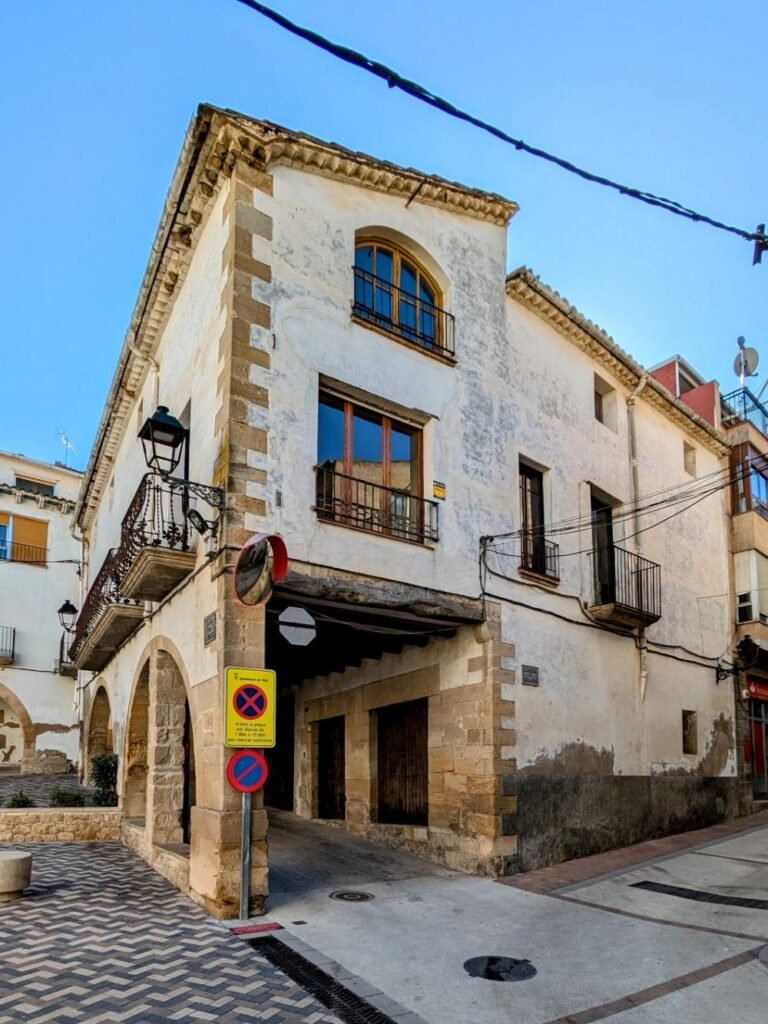
Of course Dee and I started scheming right away about all the ways we could provide a space for others, tossing around names until landing on l’Artesania, The Craft. We liked the idea of your craft being your skill, your “don,” your specialty. I’ve always loved that play between high art and craft, and we both agreed a name that wouldn’t be too exclusive to fine artists, but include a broader sense of the term craft, would be the invitation we wanted to present to our visitors.
Buying this home in Spain really reinvigorated discussions with my husband about the possibilities of moving back to Spain-sometime in the future. We had met, gotten married, and lived in Barcelona in the early 2000s. One night over dinner our daughter-who is 14 now-piped up that she would rather live in Europe than the United States, so suddenly those far-away dreams became immediate reality. We sold everything, got our visas in order, and were living here 14 months later.
2. You and your husband bring international and artistic backgrounds to this project—how did your experiences shape the vision for this retreat space?
Yes, when we met, he was in his late 20s and I had just turned 30, and we were two people from different cultures meeting in a third culture-I had to improve my Spanish really quickly because there was this beautiful man that I really wanted to have conversations with!
I studied art and philosophy in university, and then (as artists and philosophers are wont to do) spent my career in something that looks like it’s only tangentially related: communications and journalism. My last journalism project was an art publication similar to yours, actually! Hyper-local, focused on the visual and performing arts, which gave me even more opportunities to interview artists and write about art experiences than my previous work in the field. I’d say I had interviewed over 200 artists by the end of my years in journalism, so I had been given the gift of really learning what they need, what’s missing, what is helpful for an artist-particularly in the United States. My journalism career overlapped with the heyday of the ArtPrize competition in Grand Rapids, so I was also having conversations with international artists, curators, arts professionals working in so many roles, including art critic Jerry Saltz.
What I learned is that there’s this gap, this empty space, between starting off as a serious artist and being a “mid-career” or even emerging artist, someone that can gain access to residencies and other pathways to developing as an artist and becoming part of the Art World, capital A capital W. Whether artists are interested in getting on that trajectory or not, I knew what we could offer here would provide a space that could be used as a stepping stone, fill that gap so to speak.
What I learned is that there’s this gap, this empty space, between starting off as a serious artist and being a “mid-career” or even emerging artist…I knew what we could offer here would provide a space that could be used as a stepping stone, fill that gap so to speak.
But I also am a firm believer in everyone needing creative space. I teach creative journaling, and before moving away I was teaching an art and theory course at a local university where nearly all my students were not art majors–not even in the humanities. But I got them exploring their creativity, slowing down, “practicing beauty,” I call it, as they filled their first art journal throughout the semester. So this space isn’t just a space for artists and writers- I hope it is a welcoming space that makes everyone feel comfortable enough to explore beauty and creativity themselves.
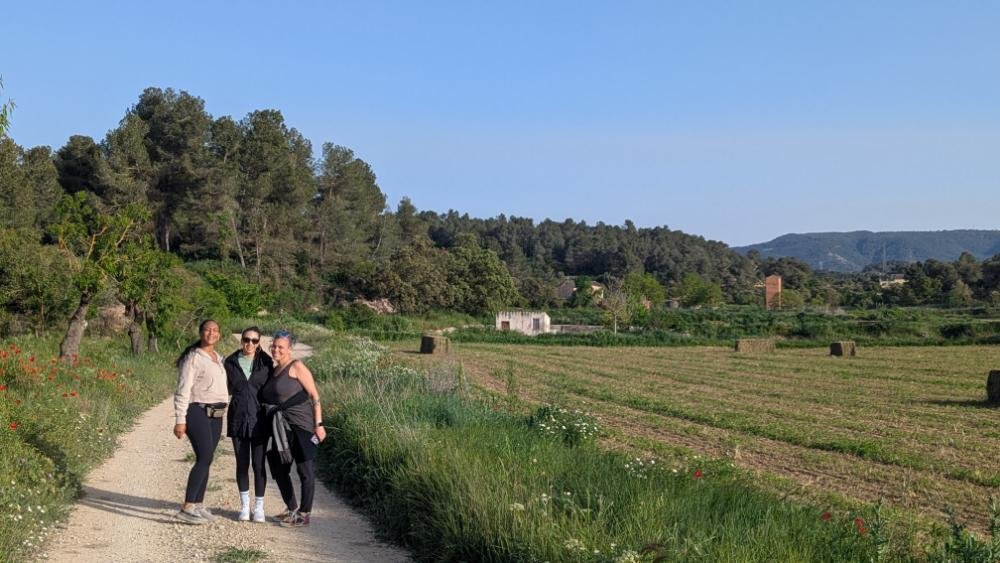
3. What has the process of bringing a historic building back to life taught you? How have you blended its rustic character with the needs of a modern creative retreat?
Oh, this house. When we bought it the former owners told us “todo funciona!” Well. “Function” can mean different things to different people. We ended up having most of the plumbing and electrical redone, replacing the decades-old wood furnace with a new gas one, and tore down layer upon layer of wallpaper. Some walls, I think, were being held up by that wallpaper!
We didn’t want a fancy place- we wanted something comfortable, where painters could throw paint around in the attic and families could relax and not worry about children running about. We got it to a place where it strikes a nice balance, actually functioning well while still having the old home feel. I grew up in a family that was painstakingly restoring a Carpenter’s Gothic Victorian home, and my husband and I have restored multiple houses ourselves, so we were no stranger to the idea of respecting the charm of an older building.
And then the attic, that inspiring attic. I wanted someplace that artists felt they could do their regular process, even if that meant paint would drip down the walls. So we leveled out the floor, and put in new lighting and outlets, and just a good coat of white paint provided the brightness the space needed while still feeling like an old landscape master, or Miro himself (whose house and studio are less than an hour from here), could have painted in this space.
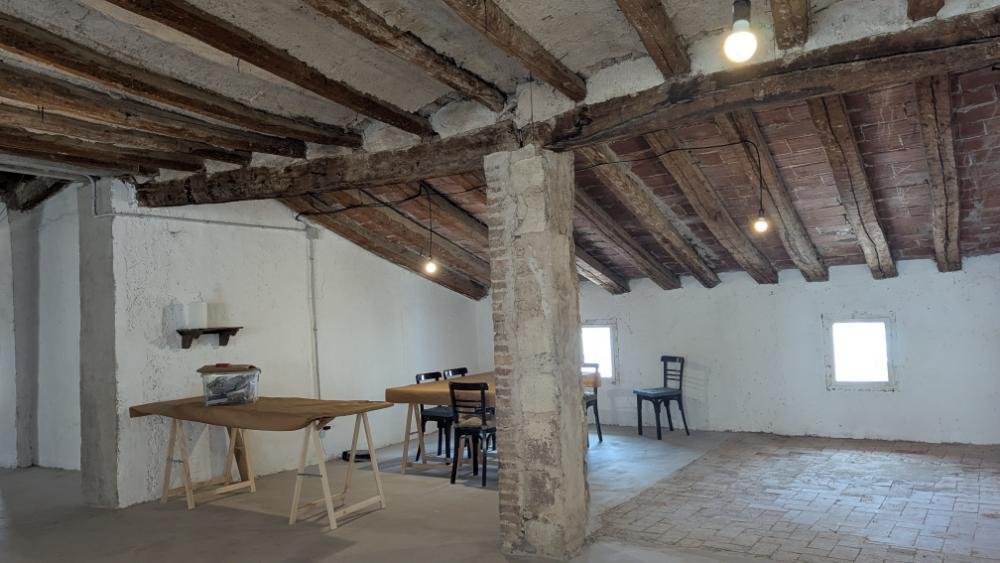
4. You describe The Craft as a place to “reconnect with beauty.” What does that mean to you personally, and how does it shape the way visitors use the space?
That is such a great question, and it has a lot of layers for me. I am a firm believer in beauty being a necessary part of life, an important tool in our mental and spiritual health. When I talk about beauty, I don’t mean makeup and patriarchal beauty standards of humans–I mean the beauty all around us: nature, architecture, candles on your dinner table, picking weeds out in the country and putting them all in a giant vase in your house, tumbling out of it generously. That kind of beauty. Ancient philosophers equated beauty with virtue, with perfection. It’s been rather recently in history that beauty has started to become seen as something frivolous, an extra if you can afford it, instead of a necessity and a virtue. So I really look for every chance I can get to help people reconnect with that need, since we so often are being told by society that beauty is out of reach, not important, an “extra.”
Cataluyna, and our comarca of Les Garrigues, is so very full of that wider experience of beauty. Around every corner are 12th century monasteries, fruit orchards and olive groves, churches and castles and cobblestone streets. In half an hour you can be up in the Prades Mountains. In 40 minutes you can be on the shore of the Mediterranean. Every kind of beauty I can think of is right around my tiny pueblo, even the beauty of generosity and kindness that we have discovered in our neighbors.
There is something about pueblo life that allows you to slow down and notice beauty.
There is something about pueblo life that allows you to slow down and notice beauty. Between the village, the home, and the opportunities for creative journaling and plein air sessions in our new friends’ fields and orchards, this area is just one opportunity after another to reconnect to beauty.
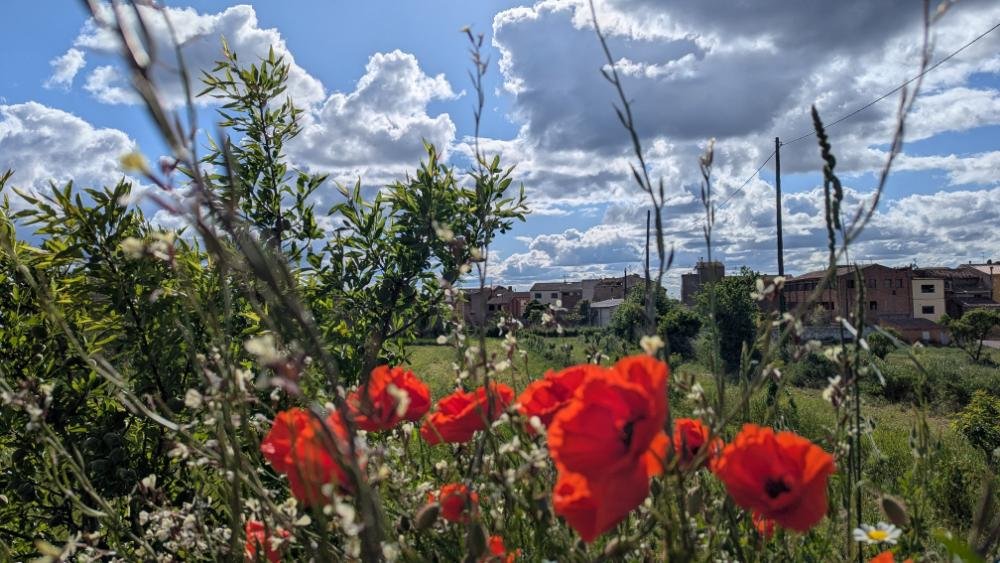
5. Walk us through a typical day at The Craft. What does life here look like for residents or retreat participants?
Well, it can look a lot of different ways. Design it for your needs! For example, for those who don’t want to worry about cooking, we can provide breakfast and pica pica dinners. There are two restaurants (three in the summer, when the pool is open) here in town as well, and we’ve found plenty of wonderful restaurants within a 10 minute radius for those wanting to explore the local gastronomy. Artists can add on a small rental fee for space in the attic to work on creative projects; writers have plenty of spaces to dig into a project, since the home has a dining room and three living room spaces; groups could use that attic space for group activities or meetings; we even have a box full of yoga mats and materials for those wanting to practice meditation or movement up in the rustic space. I’m around and available for taking visitors on walks out to the surrounding farms for drawing, painting, journaling… and we love showing off the area, so maybe it includes a trip to a historical site down the N240 a bit, or spelunking in the caves in the town 12 minutes away, or hiking in the area. We’re available for translating needs (my husband is a polyglot) and even a ride to a larger grocery store. I’m now officially a Mercadona fan, I get the hype. So if someone wants a lift to the Mercadona down the road, let’s go!
All that to say, it really has an openness to designing it to fit your own needs. If I were visiting The Craft, I would probably start my day with a coffee looking out on the plaça before settling into my creative project for the morning. Lunch out or made in the kitchen here, and then after a siesta perhaps arrange for a plein air painting session or creative journaling workshop out in one of the main fields and orchards just a short walk from the house. In the evening, I’d meet locals at bar casal, a few minute walk from the house, or sit with the retired neighbor ladies in the plaça. The sisters, Concepcion and Pilar, are welcoming, generous people and by the time you leave you may feel like you have a new grandmother.
6. You’ve built relationships with local farmers to open olive groves and almond orchards for plein air sessions. How do the landscapes of Les Garrigues inspire creative work here?
Every season has its emotive quality. The spring, with breezes blowing through the red poppies and the chartreuse colza flowers, exploded with color. Suddenly summer had turned plants brown but the sky was so blue, and of course the deep green olive tree leaves survive everything, rustling above twisting, snarling trunks and branches. Fall and winter are cooler but still so sunny you can enjoy the warm afternoon sun pouring into the big window in the living room on the plaça. There is something about the church bells chiming the hours and neighbors saying “adeu” as they pass each other in the street: it feels like you have stepped back in time, when you still were connected to the seasons, enjoying the food of the land, and knew your neighbors. It all just inspires an urge to capture it, to describe the details or find the colors on your palette.
…it feels like you have stepped back in time, when you still were connected to the seasons, enjoying the food of the land, and knew your neighbors.
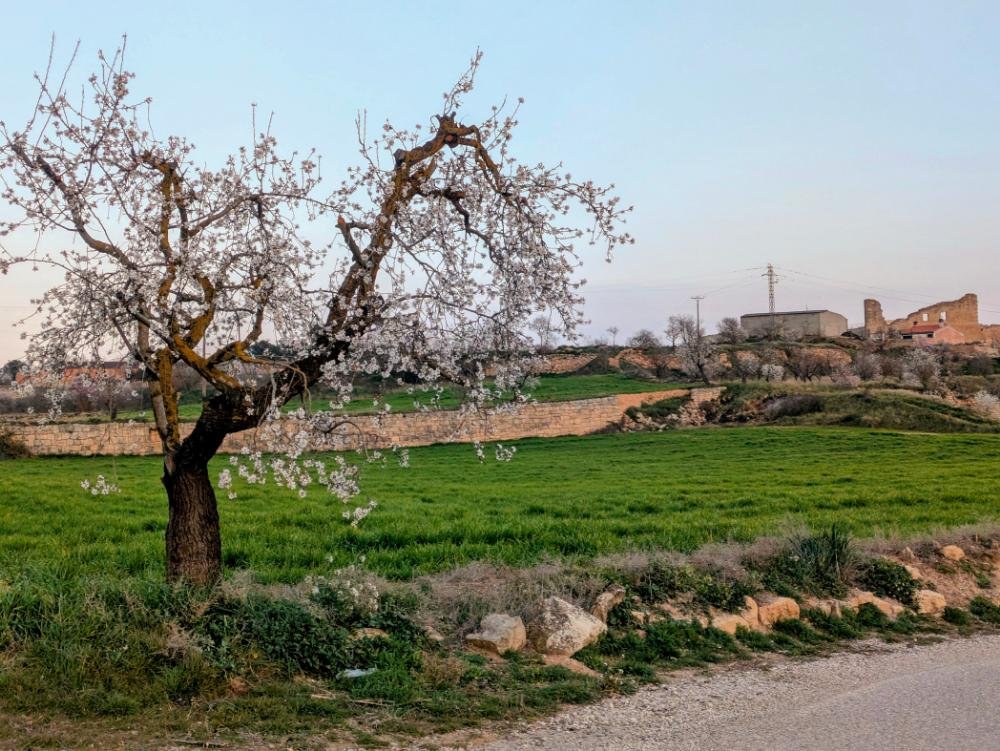
7.What kind of community do you see growing around The Craft—both among visitors who come here and within the village of L’Albi itself?
I really hope we have a rotating cast of characters staying here, and would love to see 3-5 creatives staying at once, building community and encouraging each other in their separate projects, staying up late into the night discussing books and art scenes over wine from the area vineyards. I know the village has been so welcoming to us, and to our guests, and I hope that this exchange with visitors will be a gift to them as well.
I have this dream of turning a portion of the ground level into a makeshift gallery space, so that artists that stay here could hold a one-night gallery opening. Or maybe they join the Thursday morning market, setting up their wares alongside the fruits and vegetables and bacalao (salted cod) and vats of olives. That, I think, would be great for the local community. And, you know, our visiting artists from other countries could then legitimately add to their CV “internationally exhibited artist,” another one of those gap-filling steps for artists wanting to navigate their way into the Art World.
8.Every big project has unexpected turns. What have been the most surprising challenges—or the most rewarding moments?
We call them ‘side quests.” When Dee and I arrived in the summer of 2023 for a month stay with our kids, we thought we would be cleaning, maybe doing a little painting, but mostly exploring the area. Well we did do all of that except the painting, but we also discovered that the fridge was so banged up you had to forcibly shove the door to get it to close. The shower in the 2nd bathroom had only hot water in the sink, and only cold water in the shower. The washing machine we had delivered couldn’t be hooked up, because the old electrical wiring wouldn’t handle it without risking a fire. And on the list went. We told ourselves to “think of it as camping” and somehow had an amazing month, thanks in no small part to Olga at the ajuntament (town hall) connecting us to a reliable electrician/plumber, our neighbor Concepcion, who insisted we use her washing machine, and so many others. Somehow, that first month was both of what you asked about: a surprising challenge and a rewarding moment. We really saw how wonderful the people around us in L’Albi were, and they made all the difference in those early days when nothing seemed to be going right inside the house.
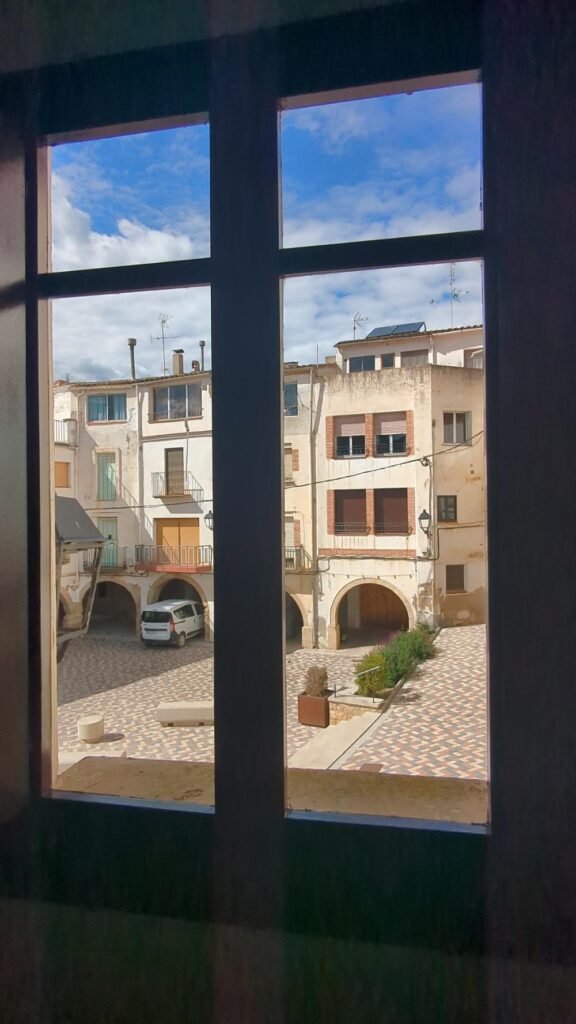
9.Apart from the gallery on the lower floor, what new ideas or dreams are you planning?
I would love to work with the local folks to plan an art fair, or a book fair, or a zine fest, or maybe even just have an “arts and literature” section of one of the many events already happening year round. Of course, we’ll see what the mayor has to say about that, but she had been picturing Cal Castell coming back to life and bringing energy back to the plaça for years before we showed up, so I have a feeling she would love that.
I’ve also started talking with the University I used to teach at about bringing students for an interim course, an intensive 2-4 week class, whether they’re focusing on outdoor sketching and painting, or studying art history in the area, or taking photographs that could have been taken hundreds of years ago, had there been cameras at that time. I got to travel internationally as a student myself, and I know firsthand what a life-changing experience that can be for a young mind.
10. Finally, how has living and working in this setting changed you—as artists, as hosts, and as people?
Well: we are Americans who have learned how to slow down. And how to have patience with other things slowing down–like bureaucratic paperwork. Spain is famous for it! So all we can do is adjust and let it teach us some important virtues like patience, right?
Honestly, I feel like we’ve been so busy setting up The Craft, and exploring our new surroundings, that the change has yet to unfold. We’ve just been here a year, so I am looking forward to seeing us change and assimilate to our new cultural setting over the years.
Thank you so much for opening up about your journey and for sharing the vision behind what you’re building with The Craft. As a fellow American who found a home in Catalunya many moons ago, I related deeply to so much of what you said.
For those who’d like to learn more or follow along, visit thecraft.es or find The Craft on Instagram @cal_castell_lalbi.


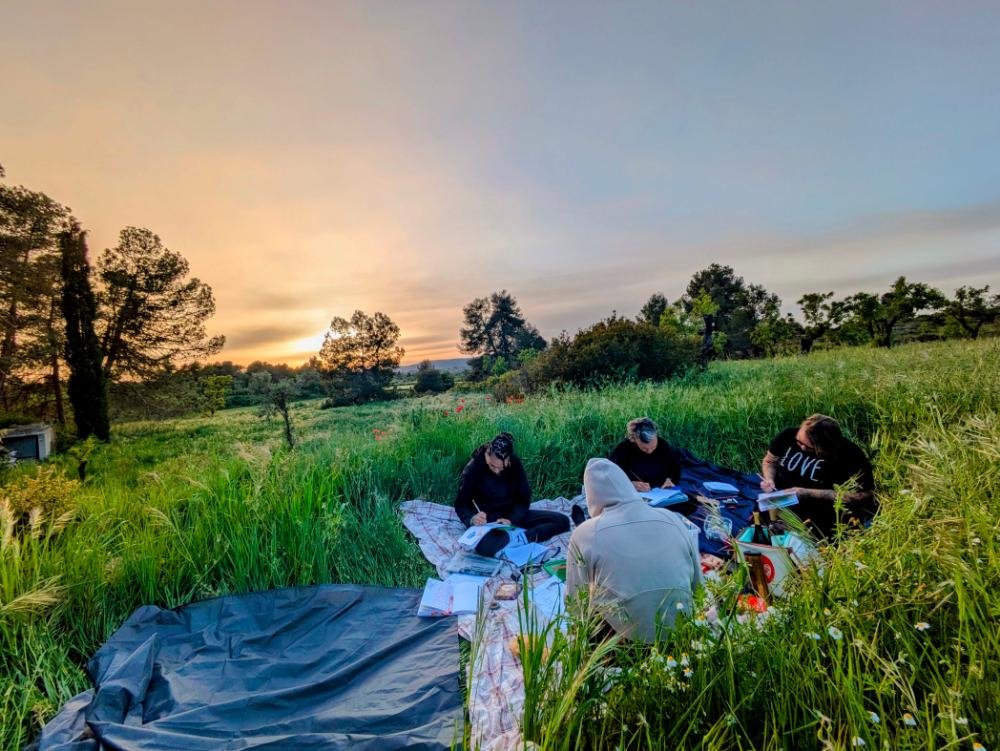
Thanks for your interest in art & creativity on FrikiFish— a one-woman labor of love, providing free content and services to artists, art-lovers and creative projects in-and-around Barcelona. This project runs on caffeine and community love, please consider supporting with a donation or a cup of coffee. Thank you!